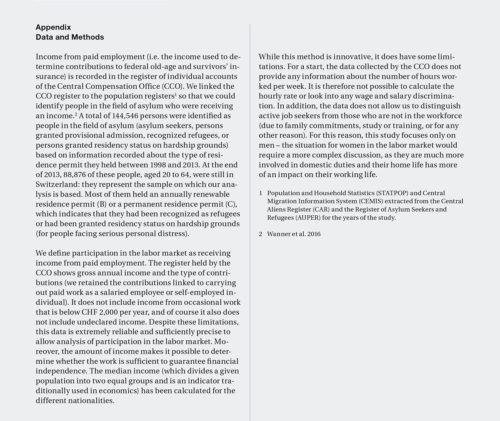highlights #2.3
How Well Are Asylum Seekers and Refugees Integrating into the Swiss Labor Market?
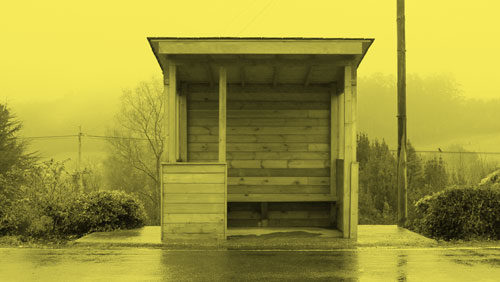
Philippe Wanner
Institute of Demography and Socioeconomics, University of Geneva
The integration of asylum seekers and refugees in the labor market has always been a hot topic. Evidence suggests that integration is often less than satisfactory, even after several years in Switzerland, and that the reasons for this are complex. This article highlights certain specific characteristics of this population and records the participation of male asylum seekers and refugees in the labor market, based on longitudinal analyses.
Assessing the labor market participation of asylum seekers and refugees presents a challenge, and the federal statistical system is finding it difficult to document this issue. In this context, the nccr – on the move is making a useful contribution with the longitudinal data it has collected. By linking various statistical databases, it is possible to undertake a longitudinal analysis, following the progress of the foreign population in Switzerland over time and assessing changes in their income from paid employment.
At the end of 2013, there were 88,876 “people in the field of asylum” in Switzerland aged between 20 and 64 years, people in the field of asylum being defined as asylum seekers, persons granted provisional admission, recognized refugees, or persons granted residency status on hardship grounds: they represent the sample on which our analysis is based. We analyze their participation in the labor market using two indicators: whether they receive income from paid employment and the median income (which divides a given population into two equal groups).
While this method is innovative, it does have some limitations. On the one hand, it is not possible to calculate the hourly rate or look into possible wage and salary discrimination. Furthermore, the data does not allow us to distinguish active job seekers from those who are not in the remunerated workforce. This study therefore focuses only on men – since women are more likely to be involved in unpaid domestic tasks.
Who Were the Asylum Seekers and Refugees Living in Switzerland at the End of 2013?
Before we analyze the participation in the labor market in more detail, we will present a few figures to describe the study population. As can be seen in Figure 1, which shows the distribution of the population in 2013 by age and gender, the majority of refugees and asylum seekers are male, with a ratio of 151 men for every 100 women.
“Men are overrepresented, especially among asylum seekers and persons granted provisional entry, among young people, and among migrants from Afghanistan and Iraq.”
This male gender bias varies depending on the age group. While the gender distribution is fairly balanced for those aged 17 years or under, from the age of 18, men strongly outnumber women, with a ratio of 230 men for every 100 women for those aged 25. This gender bias is particularly strong among asylum seekers (N permit) and persons granted provisional admission (F permit). It diminishes with age, but the ratio still remains significantly skewed with a gender ratio of 115 men per 100 women among 40-year-olds. The age distribution data also shows the predominance of 20 to 35-year-olds in the male group, whereas the age distribution among women is much more even.
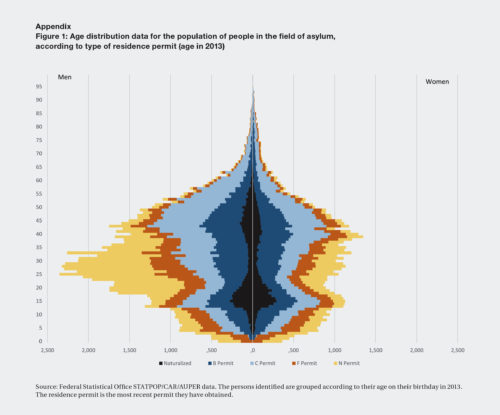
> Figure 1: Age distribution data for the population of people in the field of asylum, according to type of residence permit (age in 2013)
In this population limited to persons aged 20 to 64 years and residing in Switzerland at the end of 2013, we observe a wide range of countries of origin (see Table 1). The main groups represented are Sri Lankans, Turks and Eritreans. There are also wide variations in terms of their legal status: More than two thirds of Turks with an asylum background hold a permanent residence permit (C permit for recognized refugees), the majority of Serbs and Kosovars hold an annual residence permit (B permit for recognized refugees), Somalis tend to hold a provisional admission permit (F permit), while more than 60% of Afghans are asylum seekers (N permit) or hold a provisional admission permit (F permit). Almost one in eight persons from the countries of former Yugoslavia has been naturalized.
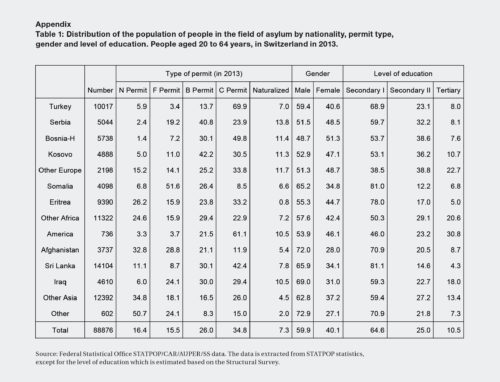
> Table 1: Distribution of the population of people in the field of asylum by nationality, permit type, gender and level of education. People aged 20 to 64 years, in Switzerland in 2013
The distribution by gender also differs according to nationality, with a male predominance among Afghans and Iraqis (more than two-thirds of whom are men) and a female predominance seen only among Bosnians. The level of education, while generally low, also shows national particularities: approximately 80% of Sri Lankans and Somalis of working age have a basic level of education (Secondary I), while among Iraqis, and especially among persons from other countries in Europe and Africa, as well as South America, the proportion of people who have received tertiary education is relatively high (between 18% and 30%).
Participation in the Labor Market Is Slowly Increasing
Figure 2 shows the percentage of men who declared an income, i.e. participated in the labor market, for the years 2008 to 2013, for 12 nationalities/regions. Only men aged 20 to 64 years who were in Switzerland for the entire period are taken into account, in order to achieve a longitudinal picture of labor market integration. For comparison purposes, the graph also shows the percentage of participants in the labor market for all men aged 20 to 64 living in Switzerland (Swiss and foreign nationals) and for all male foreign nationals (regardless of their reason for entering the country). As expected, the rate of participation in the labor market is lower for people in the field of asylum than for foreign nationals overall, and even more so in comparison to the (male) population as a whole. Sri Lankans are the exception here, as since 2010, their rates of participation have merged with those of foreign nationals overall.
“With the exception of Sri Lankans, men with an asylum background are less active in the workforce than male foreign nationals overall, and to a greater measure, than all men living in Switzerland.”
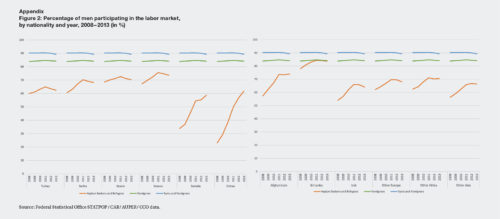
> Figure 2: Percentage of men participating in the labor market, by nationality and year, 2008–2013 (in %)
Two significant results emerge from these data. On the one hand, there are significant variations in the rates of participation in the labor market depending on nationality: besides Sri Lanka (almost 90%), the highest participation rates are seen among nationals of Kosovo and Afghanistan (more than 70% at the end of the period). Turks, Iraqis, Eritreans and Somalis had the lowest participation rates (just over 60%) at the end of the period. On the other hand, three groups showed a significant increase in rates of participation between 2008 and 2013: Afghans, Somalis and, most notably, Eritreans. The majority of migrant men from these countries arrived in Switzerland during the first decade of the 2000s: they reflect the progressive integration in the labor market that has also been highlighted in other studies.(1) The rates of participation in the labor market of other groups in the study, which arrived in Switzerland in the 1990s, appear to have peaked in the first few years of the 2010 decade and then to have plateaued or in some cases even fallen.
The trends for the different groups and the plateau observed since 2012 suggest that people in the field of asylum, with the exception of Sri Lankans, do not reach the level of participation in the labor market that is seen among the population of male foreign nationals as a whole. Factors such as their migration experience and its effect on their health (see article by Womersley et al. in this issue), insufficient education, or lack of certainty about their residence status all combined to create an obstacle to integration in comparison with foreign nationals who entered Switzerland for reasons other than asylum.
“People in the field of asylum very seldom achieve a level of participation on a par with the foreign male population overall.”
Lower Income
Figure 3 shows the income from paid employment of men in the workforce. The median income (which divides the population into two even groups, orange line in the graph) and the first and third quartile (orange dots) are shown. For comparison purposes, the graph also shows the median income for the entire male population living in Switzerland (Swiss and foreign nationals), and for the population of foreign nationals (all kinds of permits combined). As can be seen, people in the field of asylum consistently lag behind in terms of remuneration, compared with the two reference groups. At best, in some communities (countries of former Yugoslavia and Sri Lanka), the best paid 25% (third quartile) have an income which corresponds to the median income for foreign nationals residing in Switzerland. But none of the groups comes near the median income for Swiss men overall. The Bosnians and Kosovars have the highest median incomes of the groups in the study – but they are still significantly behind the median income for Swiss nationals (at 58,500 francs and 55,000 francs respectively in 2013, compared with 75,000 francs for the total male population residing in Switzerland). At the other extreme, the median income for Somalis and Eritreans is less than 35,000 francs, which is less than half of the median income for Swiss national men.
The figures also show a continued growth in median income over the period of the study, with the notable exception of Somalis, who received lower incomes in 2010 and 2011 in comparison with 2009. It should be noted that during 2010 and 2011, the rate of participation of Somalis in the labor market rose sharply (cf. Figure 2): the drop in income clearly reflects the fact that the newcomers to the labor market received a lower income than the Somalis who were already employed in 2009. However, the median income has risen most sharply among Eritreans (by a factor of 2.5) which suggests that the integration of a growing number of Eritreans in the labor market has been accompanied by a growth in the number of working hours and/or average salaries.
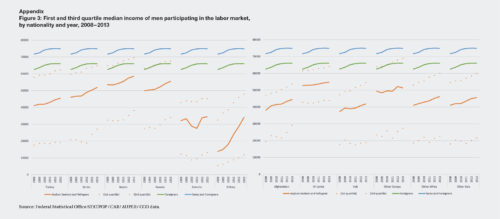
> Figure 3: First and third quartile median income of men participating in the labor market, by nationality and year, 2008–2013
“It is unrealistic to expect the income of people in the field of asylum to catch up with that of the rest of the population: while there has been a gradual increase in income from paid employment, the discrepancies still remain.”
For the other groups, income from paid employment is rising more slowly (slightly less than 4% growth over the period 2008 to 2013 for Sri Lankans and the group of other Europeans, and 16% for Afghans). Over the same period, the median income from paid employment for all working males (Swiss and foreign nationals) has grown 4.4%, while that of foreign nationals has grown 5.5%. Thus, for several groups of people in the field of asylum there is no obvious closing of the gap with the reference groups, which has either remained the same or shown no significant improvement.
Conclusion: Incomplete Labor Market Integration with Very Little Improvement
Our data indicates that, with the exception of Sri Lankans, the labor market integration of people in the field of asylum remains precarious and piecemeal, even among the nationalities that arrived in Switzerland in the 1980s and 1990s. It is not going to be possible to fully overcome the disadvantage in comparison with the population as a whole, in terms of the rate of participation of men in the labor market, even if the rates of participation grow in various national groups of people in the field of asylum. The level of pay is generally low, compared to the reference values, and for this indicator, too, the disadvantage for people in the field of asylum in comparison to the population as a whole is not being overcome.
The factors that contribute to this situation, some of which have been identified in the literature(2), are complex. Statistical models (not shown here) for example, demonstrate the fact that the type of residence permit and nationality are the two main factors influencing paid employment and the level of income(3), ahead of other factors such as age, level of education and place of residence.
In terms of the influence of the type of residence permit, it is not surprising that a permanent residence permit or annually renewable residence permit results in better participation in the workforce than a provisional entry permit or asylum seeker status. Holding a permanent or annual residence permit gives those concerned a more stable situation in Switzerland, making them more attractive to employers. The administrative procedures involved with this type of permit are also much more straightforward in comparison with those required for holders of an F or N permit (see article by Kurt in this issue). The best results are seen among holders of a B permit (annually renewable temporary residence permit). This group includes those who have been granted a residence permit on the grounds of hardship(4), and these cases are looked on more favorably if the applicant is in regular paid employment. As one would expect, therefore, the rate of employment is higher among holders of a B permit.
Nationality is another important factor, which influences participation in the labor market in a number of ways. These include the different ethnic networks to which migrants have access to help them in their integration. On the other hand, certain groups of migrants face significant discrimination on the part of potential employers.(5) A person’s language knowledge certainly plays a significant role: a recent study shows, for example, that asylum seekers who are already proficient in the language of the region to which they have been assigned, or who are given the opportunity to learn that language, integrate much more easily into the workforce.(6) And last but not least, a person’s migration experience and their future prospects in Switzerland(7), which are influenced in part by their nationality, are factors which may have an impact on integration in the labor market.
“To be effective, an integration policy has to take into account the huge diversity among people in the field of asylum in terms of their migration experience and national characteristics.”
For example, our analysis has shown that certain groups, such as Sri Lankans, have successfully integrated into the labor market, despite rather low levels of education. It can be assumed that, in contrast to other groups, existing community networks and the fact that they are well-received by employers has an impact on their integration. To conclude, on the basis of these various factors it is clear that for labor market integration policy to achieve its objectives, it must be flexible and take into account the diversity of the population of people in the field of asylum.
—
(1) See for example Spadarotto et al. 2014
(2) See Bertrand 2017 for a review of the literature
(3) Wanner et al. 2016
(4) Bertrand 2017
(5) For evidence of this, please refer to the works of Fibbi et al. (2003). These studies are being reproduced as part of the work carried out by the nccr – on the move.
(6) Auer 2017
(7) Bertrand 2017
References
Auer, Daniel. “Language Roulette: The Effect of Random Placement on Refugees’ Labour Market Integration.” Journal of Ethnic and Migration Studies doi:10.1080/1369183X.2017.1304208 (2017).
Bertrand, Anne-Laure. “Réfugiés en Suisse. Trajectoires d’asile et intégration professionnelle.” Doctoral thesis. University of Geneva, 2017.
Fibbi, Rosita, Bülent Kaya, and Etienne Piguet. Le passeport ou le diplôme ? Étude des discriminations à l’embauche des jeunes issus de la migration. Neuchâtel: Forum suisse pour l’étude des migrations et de la population, 2003.
Spadarotto, Claudio, Maria Bieberschulte, Katharina Walker, Michael Morlok, and Andrea Oswald. “Erwerbsbeteiligung von anerkannten Flüchtlingen und vorläufig Aufgenommenen auf dem Schweizer Arbeitsmarkt.” Bern: KEK-CDC / B,S,S., 2014.
Wanner, Philippe, Anne-Laure Bertrand, and Ilka Steiner. “Intégration structurelle et mesure de la déqualification de la population réfugiée en Suisse.” Research Report: University of Geneva, 2016.
Further Reading
Efionayi-Mäder, Denise, and Etienne Piguet. “Entre restrictions administratives et forces du marché: l’intégration économique des requérants d’asile et des réfugiés.” In Les défis migratoires : Actes du Colloque Cluse “Les défis migratoires à l’aube du troisième millénaire”, edited by Pierre Centlivres and Isabelle Girod, 120-33.
Neuchâtel: Seismo, 2000.


